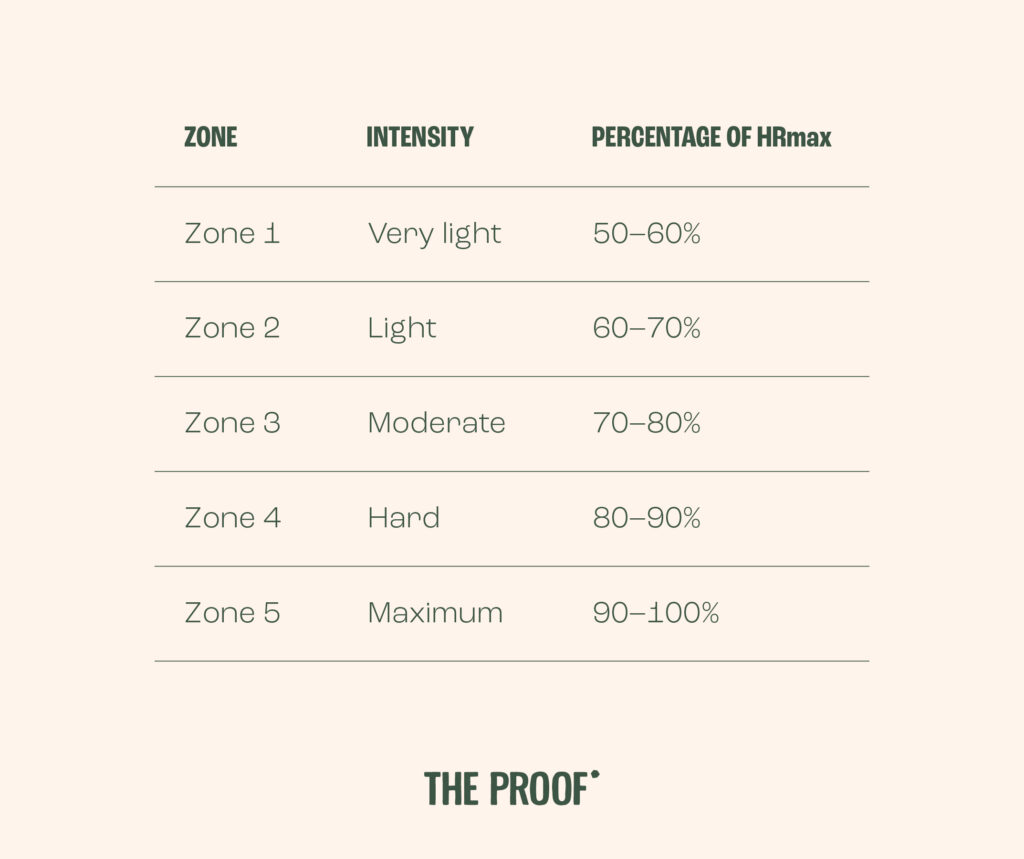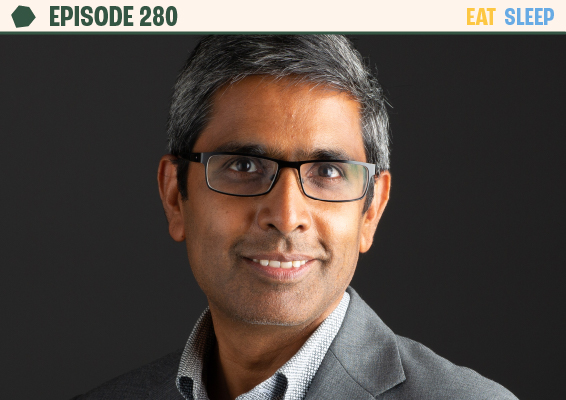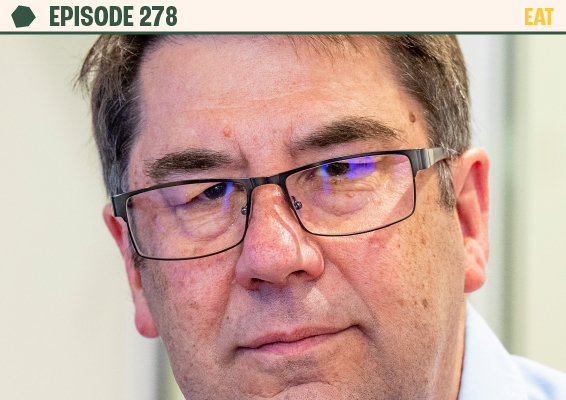If you’re engaged with online health communities, chances are you’ve come across content promoting the benefits of Zone 2 training. In Episode #277, Dr Inigo San Millan joined me on the show for a theory-based deep dive of what Zone 2 training is and how it works. Today, I sit down with my good friend Drew Harrisberg to unpack what all this means in practice, with specific guidance on how you can apply it to your own training procedures.
“It’s not enough to think you trained really hard… It’s not enough to be breathing heavy and hurting, you’ve got to have some objective feedback. You need to measure your heart rate.”
Drew Harrisberg is no stranger to The Proof, with this episode marking his thirteenth appearance. Drew is an exercise physiologist, sports scientist, and holds a graduate certificate in diabetes education and management. His platform, “Drew’s Daily Dose”, aims to inspire, empower, and enable people to live better lives. Drew is also an ambassador for Diabetes NSW and has presented a motivational TEDx talk.
“Feeling good short-term is not a good proxy for long-term health.”
In this episode, we focus on the practical steps you can take to fit Zone 2 training into your schedule. This includes how to calculate your max heart rate, how much time you really need to spend in Zone 2 (and whether you would be better off spending it in Zone 4 or 5), and considerations for what is achievable. See below for calculations and resources to help.
We also discuss fasted versus fed training, visceral fat, personalisation within a plant-based diet, and much more. Overall, this is a conversation packed with useful insights and plenty of laughs along the way.
Specifically, we discuss:
- Intro (00:00)
- Drew’s Insights on Training Regimens (06:52)
- Deep Dive with Inigo: Exploring Zone 2 Training (09:01)
- The Importance of Mitochondrial Function in Workout Planning (22:38)
- Do You Really Need 300 Minutes in Zone 2? (23:56)
- Discovering the Ideal Cardio Protocol (31:10)
- Cardio Strategies on Social Media: Are They Effective? (40:51)
- Methods to Accurately Measure Your Maximum Heart Rate (46:34)
- The Perfect Cardio Routine: Part II (50:46)
- Unveiling the Truth: Latest Research on the Fat-Burning Zone (1:02:40)
- Dad Joke of the Week (1:13:48)
- Navigating Science-Backed Information on Social Media Platforms (1:15:02)
- Shedding Light on Visceral Fat and Its Implications (1:19:14)
- Tailored Diets: Are They the Answer to Individualised Nutrition? (1:26:08)
- The Controversy Surrounding Seed Oils (1:33:02)
- Outro (1:36:56)
I hope you find this recap episode useful in bringing all the pieces of Zone 2 training together. I know you’ll walk away with plenty of takeaways you can grab a hold of and implement straight away.
To connect with Drew, you can reach him via his Instagram or website, Drew’s Daily Dose. He also has a training program to put many of the principles discussed today and in previous episodes into practice. Make sure to catch his previous episodes on the show, available on The Proof website, and check out the resources below for more.
Optimise your health with InsideTracker’s biomarker analysis. Get exclusive access to InsideTracker’s new ApoB test, and a significant discount at insidetracker.com/simon.
The best way to support the show is to use the products and services offered by our sponsors. To check them out and enjoy great savings, visit theproof.com/friends.
Enjoy, friends.
Simon
More about Drew Harrisberg
Drew Harrisberg is an exercise physiologist, sports scientist, has a graduate certificate in diabetes education and management, and most importantly – is a happy and healthy guy thriving with type 1 diabetes. After being diagnosed with type 1 diabetes at age 22, Drew made it his mission to regain control of his health by making positive changes to the way that he lives, eats, moves, and the mindset in which he approaches life. Drew has not only accepted living with diabetes but has also learned to manage it so that it doesn’t manage him. Drew’s background as a qualified health professional and his personal experience living with type 1 diabetes for over 10 years is what fuels his passion to share everything he learns along the way, which is why he created Drew’s Daily Dose – a home that inspires, empowers, and enables people to thrive rather than simply survive.
Drew is a voice for the diabetes community and is an ambassador for Diabetes NSW. He has also presented a motivational TEDx talk.
How to calculate your Zone 2 target
This method provides a more accurate maximum heart rate calculation than the standard 220 – age formula.
Step 1
Calculate your max HR using the Tanaka or Gulati formulas:
- MALE = 208 − 0.7 × age
- FEMALE: 206 – (0.88 × age)
Step 2
Calculate your target heart rates for each zone using the Karvonen formula:
Enter your Max HR and resting HR into this calculator along with your target intensity. https://www.omnicalculator.com/health/karvonen-formula
If you don’t know your resting HR (most fitness wearables will tell you this) you can calculate it manually using these steps: https://www.health.harvard.edu/heart-health/want-to-check-your-heart-rate-heres-how
The Karvonen calculator will give you a lower and upper bound for each zone. Remember, Zone 4 and 5 is going to be your HIIT (high-intensity interval training) range.

Talk test versus heart rate for Zone 2 training
If doing Zone 2, use the Talk Test and your target heart rate to ensure you are working out at the right intensity. If you notice your heart rate goes up towards the end of your session, reduce your intensity, so you can still talk but are a little puffy. Always come back to the Talk Test as your best guide for determining if you are in Zone 2.
3-week cardio program
Session 1
Zone 2 with a Zone 5 finisher
- Zone 2 @ 60–5% HRmax for –60 mins on a stationary bike
- Finish with 4 minutes of Zone 5 @ >85% HR max on an assault bike or rowing machine
Session 2
Zone 3-4 with a Zone 5 finisher
- 30–45 minutes of Zone 3/4 @ 75–85% HRmax (run, row, or stationary bike)
- Finish with 4 minutes of Zone 5 @ > 85% HR max on an assault bike or rowing machine. You can perform this in intervals of 60:60s i.e. 60 seconds as hard as possible followed by 60 seconds of rest or 40:20 etc.
Session 3
4×4 HIIT protocol on the rowing machine or assault bike
4 ROUNDS
- 4 minutes of work @ >85% HRmax
- 3 mins of active recovery @ 60–70% HRmax
Additional resources
- Bigger Stronger Fitter Training Program • Drew’s Daily Dose
- Episode #277 with Inigo San Millan • The Proof
Supporting studies
- Evidence-based vs. social media based high-intensity interval training protocols: Physiological and perceptual responses • PMID: 34587217







